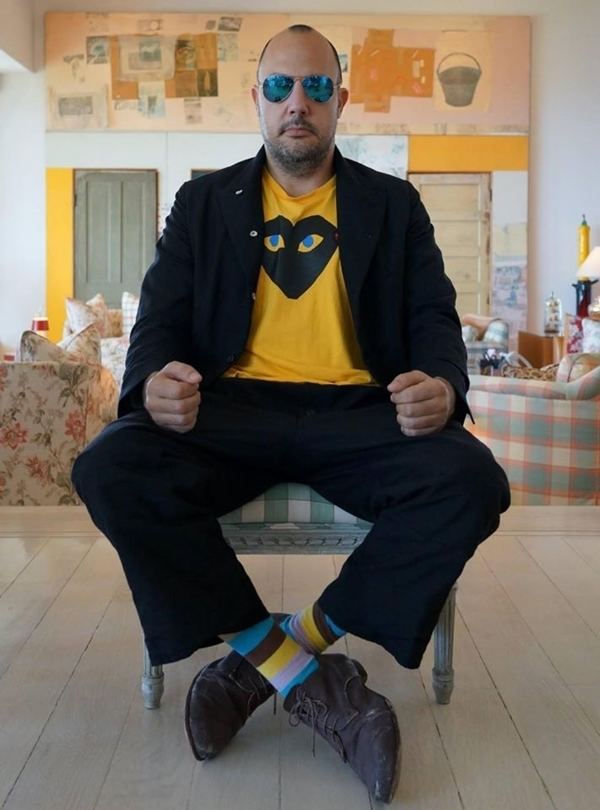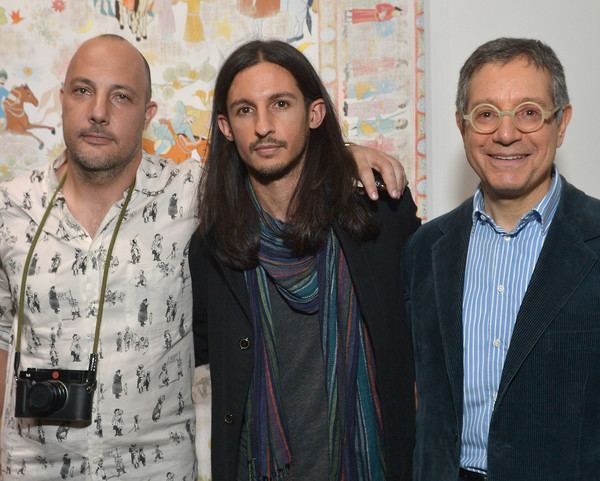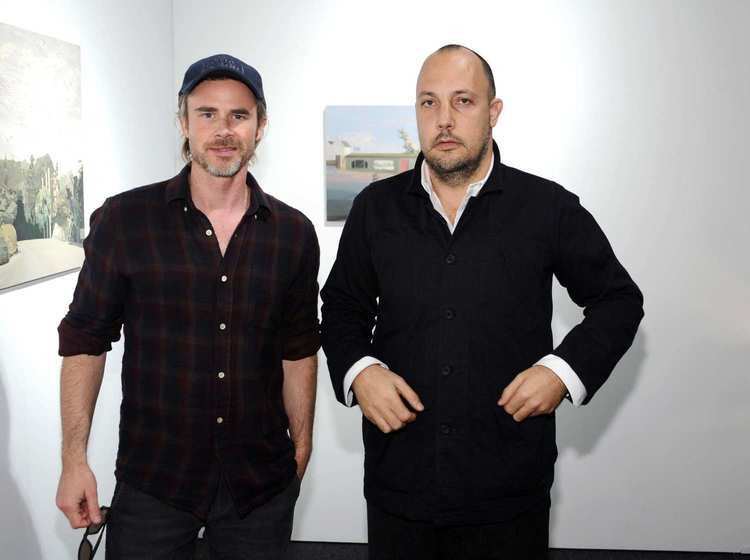Years active 1995–present Role Art collector Name Stefan Simchowitz | Website Simchowitz Partner(s) Rosi Riedl Movies Johns | |
 | ||
Occupation art collector, art curator, advisor Similar People Beau Flynn, Matthew Libatique, Scott Silver, Paul Brown, Nick Wechsler | ||
Stefan simchowitz interview for unchain my art 3
Stefan Simchowitz (born in Johannesburg, South Africa on October 8, 1970) is a Los Angeles-based art collector, art curator, and art advisor. He is a vocal proponent of social media as a legitimate vector for discovering, distributing, and popularizing the fine arts, primarily using Facebook and Instagram as platforms for self-promotion, discovering new artists, and endorsing those he already manages.
Contents
- Stefan simchowitz interview for unchain my art 3
- Stefan simchowitz in the why art diem 2015 panel
- Controversy
- Education
- Producer
- Filmography
- MediaVast
- Career
- References

Simchowitz believes that conversations on social media hold a degree of influence over the artworld comparable to other canonical forums for artistic discussion and legitimization, including art reviews written by critics for key publications. Supporters see his method as concerned with diversifying the number of systems which recognize and produce credible artists. A number of them, including, but not limited to Sterling Ruby, Oscar Murillo, Lucien Smith, Petra Cortright, Zachary Armstrong, Kour Pour, Jon Rafman, and Marc Horowitz have all been advised by Stefan Simchowitz. In November 2015, he was ranked #95 in Art Review Magazine's POWER 100, a list of 2015's "most influential people in the contemporary artworld."

Stefan simchowitz in the why art diem 2015 panel
Controversy

Simchowitz is a popular target for critics who claim that his particular penchant for promoting young, undiscovered artists through bulk acquisitions of their work to later flip for profit destabilizes established workings of the art world — age-old, value-determining systems composed of a long-standing and tight network of critics, publications, universities, museums, and galleries that collectively define the nature of good art. He subverts this establishment by selling his curated acquisitions directly to a diverse network of wealthy clientele who trust his taste implicitly.

In the media, he has received both ample praise and heavy criticism. He has been called the Michael Milken of the art world, and "a Sith Lord from the Brotherhood of Darkness," by Jerry Saltz. Art Review's entry on Simchowitz states that "if the artworld needed its Howard Stern, its Ari Gold, its Donald Trump, it got 'Simcho': a brash, publicity-hungry yet highly intelligent collector-adviser-dealer...". Andrew M. Goldstein of Artspace argued that "his approach to collecting and nurturing artists systematically abrogates—annihilates—a whole series of beliefs that lie at the foundation of the art world's critical, institutional, and commercial structures." Simchowitz's trademark transparent and honest attitude leads some to believe that he is simply lifting the veil off of previously hidden activities already prevalent in the artworld. Marc Spiegler, director of Art Basel, attributes Simchowitz's success to the fact that he does exactly what the galleries do, except at a significantly faster clip, and the "he has taken a market that was built on opacity and been much more transparent. He goes to an artist's studio; he puts the stuff on Instagram." Spiegler characterizes Simchowitz's practice as similar in function to galleries of past, in that he holds exclusive access to his collector base. As such, the approach has been characterized as paradigm-shifting in the context of the contemporary artworld, while snuggly fitting into an extended historical lineage of the artworld's many businessmen.
Education

Simchowitz spent his early years in South Africa, but otherwise lived a mobile childhood. He graduated from Stanford University with a bachelor's degree in economics, finishing the program in three years. Shortly after, he attended the American Film Institute in Los Angeles. Simchowitz would go on to produce and assistant produce fifteen films.
Producer

After college, Simchowitz started a film production company responsible for a number of feature films and shorts, such as Darren Aronofsky's critically acclaimed drama, Requiem for a Dream.
Filmography
MediaVast
In 1999, Simchowitz co-founded the visual content provider MediaVast. Later in 2007, Getty Images acquired the company for a reported 207 million USD. At the time of the sale, the repository held approximately 8.5 million images.
Career
Stefan Simchowitz engages in a hybrid practice that includes art dealing, art advising, and art collecting. He believes that "the alchemy of art is that it’s not just the artist who produces the work but the spectator and the audience that essentially refines the art in its raw state into a refined product." As such, once he discovers a young, talented, generally unknown artist with whom to work with, he sets about generating a market for them, as well as their work, building demand which eventually drives up prices. This part of his practice functions not unlike that of an art gallery. In the meantime, Simchowitz serves a patron-like role for the artist, providing them with the finances needed to live, maintain a full-time studio, and produce work. He believes that the artist must be committed to their creative work on a full-time basis and that financial hardship, as well as the need to make ends meet can be detrimental to the challenge of making good art. However, in exchange for footing the bill, Simchowitz buys any new work at a discount.
Simchowitz burst into the public stage when a 2014 Bloomberg article about speculation in the contemporary art market reported on his on-the-cheap purchase of 34 paintings by the Colombian artist Oscar Murillo near the beginning of his career in the early 2000s, paying as low as 1,500 USD for some canvases. Since then, between 2012 and 2014, the value of a Murillo work surged by nearly 3,000 percent. In the current auction climate, a typical piece by the artist can command as much as 400,000 USD at auction. However, Simchowitz rarely sells the work which he collects, and currently sits on a collection of over 1,500 contemporary works that he personally values at around 30 million USD, with "five percent of the works accounting for fifty percent of the value."
In addition to dealing and collecting, Simchowitz also works as an art advisor. He serves a roster of clients who he advises on the acquisition of contemporary art, offering advice not only on works produced by artists under his representation, but also on art outside of his immediate reach, pieces typically for sale at galleries and auction houses.
